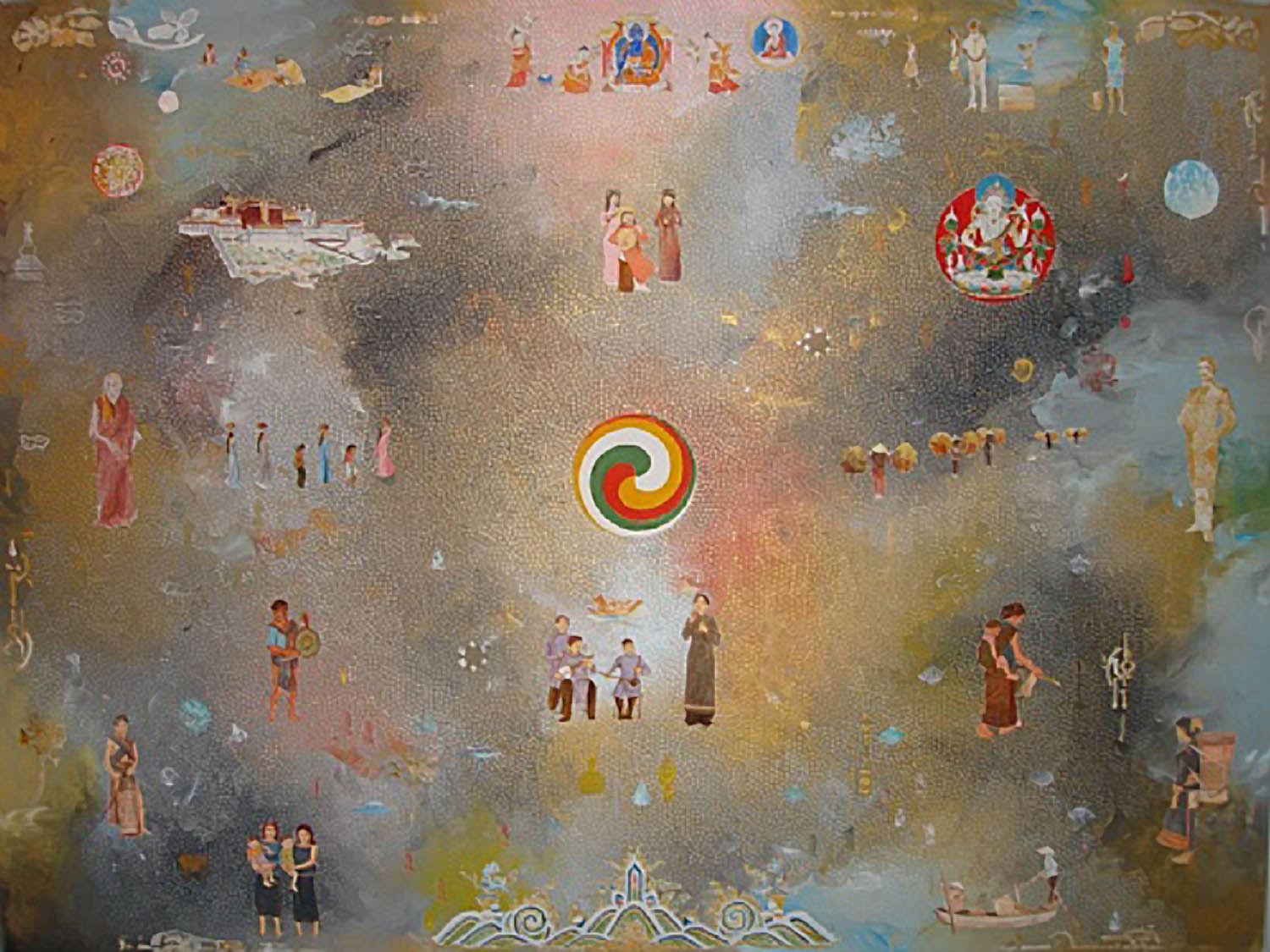Tim Johnson
Seamless, 2002
acrylic on canvas
92.0
x 122.0
cm
SOLD
Provenance
Gallery 4a, Sydney
Acquired from the above by the present owner in 2002
This work is a collaborative work with My Le Thi (b. 1964)
Floating on a backdrop of ethereal colour and Aboriginal dots is a cross-cultural amalgamation of symbols, an equation that forms the collaborative body of work by Tim Johnson and My Le Thi. Born from Johnson's fascination with and study of other cultures this painting demonstrates Johnson's solid knowledge of Aboriginal culture (he was granted permission to use the Aboriginal dot sequencing in the early eighties) and his search for philosophic answers in eastern spirituality.
In his artistic partnership with My Le Thi these attributes are enhanced, as a fascinating combination of cultural symbology and spiritual synthesis produces a meditative work of cosmic proportions that somehow remain bound to earth. Since the early eighties, Johnson has been interested in Buddhist culture and been open to the possibilities of non-western traditions. My Le Thi's birthplace, the highlands of Central Vietnam inform her descriptive style. The cross-cultural dialogue of these two artists accentuates both the differences and similarities of multiple belief structures.

‘…one has to work in a symbolic space, perhaps like the Buddhist Pure Land, or the mandala itself, to create an illusory reality or a virtual reality in which the space that the artwork occupies is revealed to the audience that can read enough signs to unravel its meanings.’ (Tim Johnson, quoted in Wayne Tunnicliffe, ‘Pure Land Painting’ in Tim Johnson: Painting Ideas, Art Gallery of New South Wales, Sydney, p. 58.)
Tim Johnson’s paintings are fascinating cross-cultural documents that embody the inherent multiculturalism within contemporary society. Born and trained in Sydney, Johnson began as a conceptual and performance artist, establishing the Inhibodress art space in Sydney along with Mike Parr and Peter Kennedy. In 1975-76, Johnson travelled to North and South-East Asia, where Buddhist spirituality and culture left an indelible impression.
Johnson first travelled to Papunya, Northern Territory, in 1980, where he learned dot painting with Aboriginal artists including Clifford Possum Tjapaltjarri. After seeking permission to continue incorporating indigenous techniques within his paintings, Johnson developed a visual vocabulary that placed the vibrancy of the dot alongside symbols and icons of Asian religion and folklore. The resultant paintings are spiritual landscapes, testaments to Johnson’s connections to different aesthetic traditions around the world. He and his then-wife, the writer and sociologist Vivien Johnson, were instrumental in introducing these Central Australian artists to the art market and increasing the Australian public's awareness and appreciation of First Nations art and culture.
More recently, his contemplation of mythology has led Johnson to popular culture, with symbols from science fiction, video games and Japanese anime being incorporated alongside traditional images of the Buddha or the lotus flower. The common feature of these disparate influences is the sense that there is a shared consciousness of images and symbols from all cultures that makes sense to audiences from all backgrounds.
Tim Johnson has worked and exhibited for almost five decades, both alone and collaboratively with the likes of Karma Phuntsok, My Le Thi and Clifford Possum Tjapaltjarri. In 2009-10, a major solo exhibition, Tim Johnson: Painting Ideas toured the Gallery of Modern Art, Brisbane, the Art Gallery of New South Wales, Sydney, and the Ian Potter Museum of Art, Melbourne. He showed in 2012 at The Unseen, the Fourth Guangzhou Triennial, China, and has been included in three Biennales of Sydney.